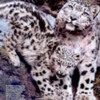Thank you yoko for the very interesting topic.
The snow leopard, also known as the ounce, is a large cat native to the mountain ranges of Central and South Asia. It is listed as Vulnerable on the IUCN Red List because the global population is estimated to number less than 10,000 mature individuals and is expected to decline about 10% by 204
This is also from National Geographic:
Conservation
In recent years, a concerted effort has begun to save snow leopards. Protected areas have been established throughout their range, including sanctuaries in Afghanistan, Mongolia, and Kyrgyzstan. The latter was particularly good news: Kyrgyzstan’s mountains serve as a corridor for snow leopards traveling between the northern and southern ends of their range.
That said, creating protected areas for these big cats has only helped so much: According to one study, 40 percent of those protected areas are too small for the wide-roaming snow leopard.
Countries have also been strengthening their enforcement against poaching, and conservation groups work with herders to develop systems to keep snow leopards away from their livestock. Others are building awareness about the important role these big cats play in their environment. As a flagship species, snow leopards are essentially a mascot for their entire ecosystem: If they survive, so will many of the other species in their habitat.
What is the snow leopard?
These spotted leopards live in the mountains across a vast range of Asia. They are insulated by thick hair—in shades of gray or creamy yellow and covered with grayish black spots—and their wide, fur-covered feet act as natural snowshoes. Snow leopards have powerful legs and are tremendous jumpers, able to leap as far as 50 feet. These big cats use their long tails for balance and as blankets to cover sensitive body parts against the severe mountain chill. They are shy and reclusive, and rarely seen in the wild.
Threats to survival
The expansion of human settlement, especially livestock grazing, has led to increased conflict. Herders sometimes kill snow leopards to prevent or retaliate against predation of their domestic animals. Their lives are also threatened by poaching, driven by illegal trades in pelts and in body parts used for traditional Chinese medicine. These cats appear to be in dramatic decline—they've lost at least 20 percent of their population in two decades as a result.

